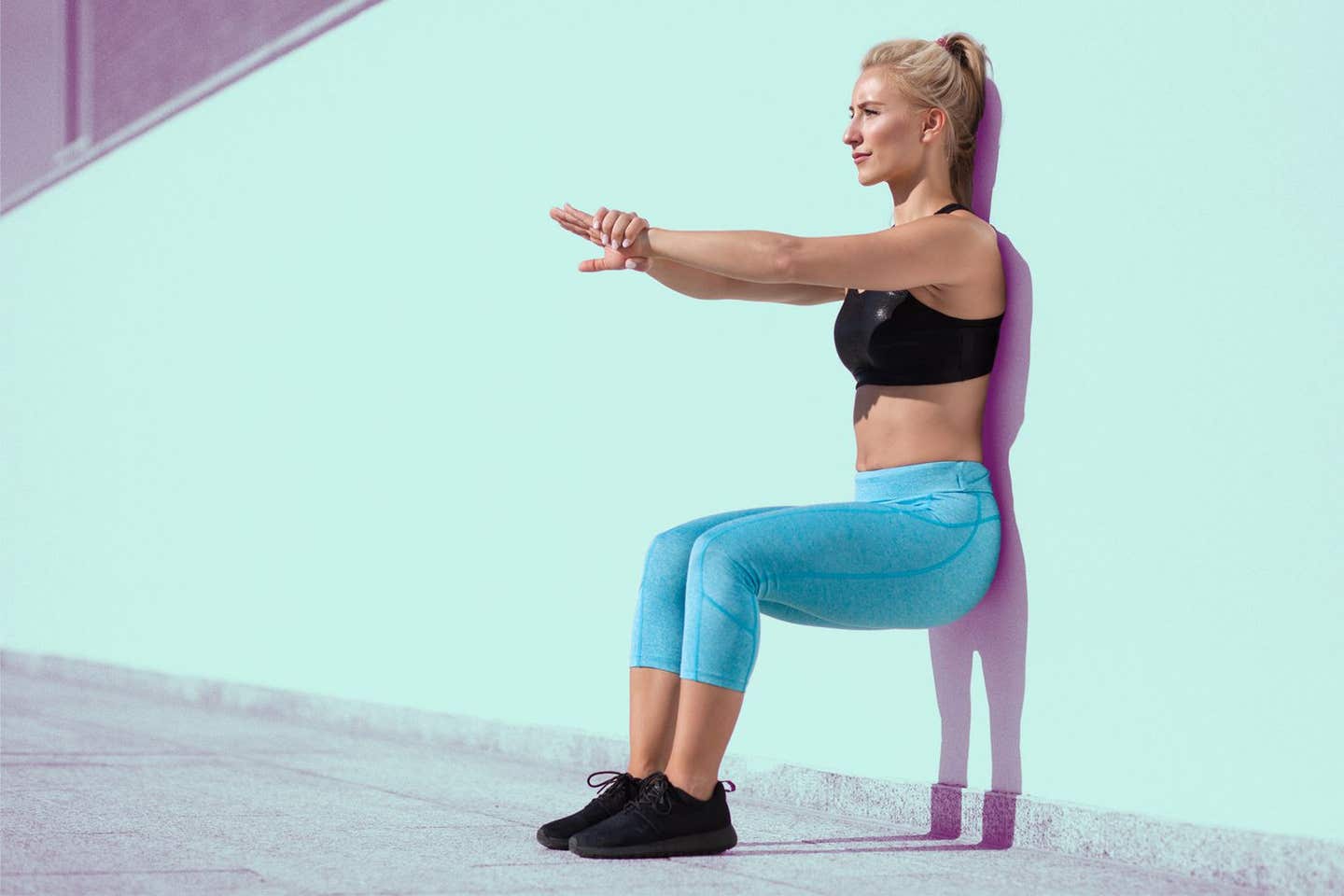These are the two best exercises for lowering blood pressure, study finds
When thinking about exercise programs to manage blood pressure, the typical advice has been to engage in aerobic or cardiovascular routines.

When thinking about exercise programs to manage blood pressure, the typical advice has been to engage in aerobic or cardiovascular routines. (CREDIT: Shutterstock)
When thinking about exercise programs to manage blood pressure, the typical advice has been to engage in aerobic or cardiovascular routines. However, groundbreaking research now suggests that there may be a different kind of exercise that's even more effective.
Isometric exercises are those that engage muscles without any noticeable movement. Examples include wall squats and planks. These can be performed using weights or just leveraging one’s body weight. A recent study in the British Journal of Sports Medicine reveals intriguing insights into how these exercises might be the key to better blood pressure control.
Dr. Jamie O’Driscoll, study coauthor and a renowned reader in cardiovascular physiology at Canterbury Christ Church University’s School of Psychology and Life Sciences in England, states, “Overall, isometric exercise training is the most effective mode in reducing both systolic and diastolic blood pressure.”
Isometric exercise that stole the limelight with the most significant reductions in blood pressure. (CREDIT: Creative Commons)
He adds, "These findings provide a comprehensive data-driven framework to support the development of new exercise guideline recommendations for the prevention and treatment of arterial hypertension.”
Existing blood pressure management guidelines, which have heavily promoted cardiovascular exercises like running or cycling, are based on older research. Modern exercise protocols such as high-intensity interval training (HIIT) and isometric training weren't part of the foundational studies that established these guidelines.
Because of these shortcomings, researchers dove into a vast pool of data, analyzing randomized controlled trials from between 1990 and February 2023 that looked into the effects of exercise interventions on systolic and/or diastolic blood pressure.
Related Stories
To understand the context, systolic blood pressure gauges the maximum pressure in the arteries when the heart contracts. In contrast, diastolic pressure measures the arterial pressure during the resting phase between heartbeats, as explained by the US Centers for Disease Control and Prevention.
Health standards dictate that resting blood pressure should be below 130/85 mmHg, with high blood pressure being 140/90 mmHg or greater.
Insights from a Comprehensive Review
The review encompassed 270 trials with a staggering 15,827 participants. Known as a meta-analysis, this process revealed that among HIIT, isometric exercise, aerobic exercise, dynamic resistance training, and a mix of the latter two, it was isometric exercise that stole the limelight with the most significant reductions in blood pressure.
In numbers: post-aerobic exercise, the reduction was 4.49/2.53 mmHg; post-dynamic resistance training, it was 4.55/3.04 mmHg; after combined training, it read 6.04/2.54 mmHg; post-HIIT it came to 4.08/2.50 mmHg, and a promising 8.24/4 mmHg was seen after isometric exercise training.
This effectively indicates that wall squats, a type of isometric exercise, were most potent in reducing systolic pressure. Conversely, running, an aerobic exercise, had a more pronounced effect on decreasing diastolic pressure. Still, overall, isometric exercises outshone all in managing both pressure parameters.
Joanne Whitmore, senior cardiac nurse at the British Heart Foundation, emphasized the significance of enjoying the chosen form of exercise for consistent benefits. She adds, "However, it’s important to note that there are other lifestyle changes as well as exercise that can benefit your blood pressure."
The reasons why isometric exercises might have an edge over other training forms in blood pressure management remain to be fully understood, warranting further investigation.
Incorporating Isometric Exercises into Daily Routine
For those eager to integrate this finding into their routines, the Arthritis Foundation recommends starting with wall squats. Here's how: stand with your back against a wall, position your feet about 1½ feet away, and maintain a shoulder-width gap. Keeping your back against the wall, squat without letting your rear drop lower than your knees. Aim to do 10 wall squats three times a week.
Isometric high plank. (CREDIT: Stocksy)
Standard isometric training protocols involve four two-minute contractions interspersed with one- to four-minute rest intervals, repeated thrice a week.
However, a word of caution from Whitmore, “If you have a heart condition, consult with your doctor about the best exercise.” Jim Pate, a senior exercise physiologist, echoes this sentiment, highlighting the importance of consulting professionals familiar with clinical exercise for tailored advice.
As research continually redefines our understanding of health and wellness, it's evident that exercise, in its myriad forms, remains a cornerstone for a healthy life.
For more science news stories check out our New Discoveries section at The Brighter Side of News.
Note: Materials provided above by The Brighter Side of News. Content may be edited for style and length.
Like these kind of feel good stories? Get the Brighter Side of News' newsletter.



